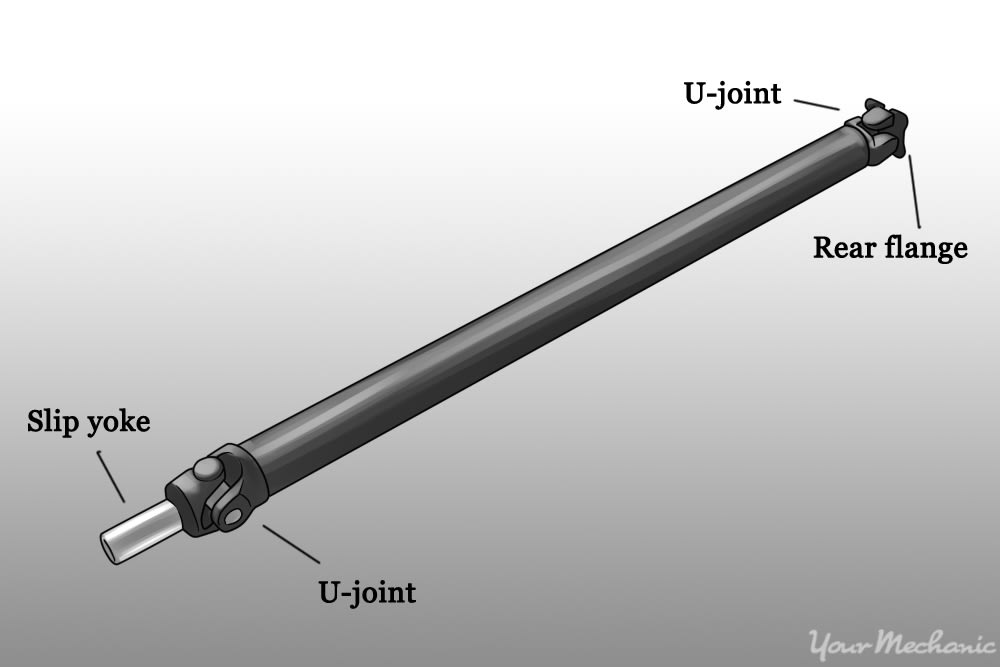While a driveshaft used to be a very simple element connecting the transmission to the rear axle, vehicle developments such as front-wheel drive and independent suspension have created a few more options, causing confusion when it’s time to repair your car. drop offs. This quick guide should explain the many options available for replacement driveshafts and how to choose the right one for your car or truck.
There are basically two types of driveshafts. A conventional transmission connects the transmission to the front or rear differential and runs the length of the car. A more modern development (relatively modern at least; it has been for at least 50 years) is the constant speed (CV) axle that connects the wheel hub to the differential or transaxle, and this type of drive axle moves perpendicular to the vehicle. is length. Nor is it the condition of one or the other; For example, a rear-wheel drive car with independent rear suspension would have a conventional driveshaft connecting the transmission to the rear differential, then a pair of CV axles connecting the rear differential to the wheels. A front-biased four-wheel drive SUV will have a CV axle on each wheel, as well as a driveshaft that connects the transmission or transfer case to the rear differential.
Instead of a solid axle, a constant speed axle is used for vehicles with independent suspension. A CV axle connects the hub of a driven wheel to a differential or transaxle assembly that combines the transmission and differential into a single unit. A CV axle also has a CV joint at each end, so it can continue to transfer power when the front wheels are turning or the suspension is moving up and down.
The most common reason for replacing a CV axle would be that the rubber boots protecting the gaskets have dried out and cracked, causing grease to leak out and possibly leave a stain under your parked car. If you catch the problem early, you can replace the boots on their original axle and re-grease the CV joints. But like in the driveshaft example above, the cost of new boots and the labor to install them is pretty close to the cost of replacing the entire shaft with a quality replacement part. Also, if CV boots lose grease over a long period of time it can damage CV joints, meaning the shaft will have to be replaced anyway. A telltale sign that the CV joints need to be replaced will be a snapping or snapping on the front, which usually happens when turning at slow speeds. While you can replace CV shafts all at once, they wear out at the same rate, so you can save time and money and ensure greater long-term reliability by replacing them in pairs. You should also consider replacing the shaft seal with the shaft; They are a relatively inexpensive part that is very easy to replace as preventive maintenance when your axle is out.
A driveshaft is a simple part, more or less a metal beam with a joint at each end and possibly a joint in the middle on taller vehicles as well. The most common reason to replace a driveshaft is because one of those universal joints (or the U-joint) has worn out. You will notice a clicking noise when you step on the gas pedal and stop or change gears, or possibly feel a vibration and hear a sound under your vehicle while driving at high speed. While your mechanic can replace the universal joint on his own, he often needs a shop press to do so, and will then need to have the driveshaft professionally balanced, to avoid vibration when rotating at high rpm Can you We offer brand new or completely rebuilt driveshaft assemblies that already have brand new professionally pressed U-Joints and are fully balanced and ready for installation at your door. This option is useful for do-it-yourselfers and also reduces labor costs if you ask your mechanic to install the part.
If your vehicle was available with 4WD, it may have two driveshafts; One that connects to the rear differential and another, much smaller, that connects the transfer case to the front differential on 4WD models. We’ve seen customers order the wrong driveshaft earlier because of this confusion, so this should be taken into account when ordering a replacement part.
do you have a truck With multiple bed and cab length options available, not to mention different power trains, trucks often have many more options for replacing the driveshaft. For the rear driveshaft connecting the transmission or transfer case to the rear differential, it is very helpful to measure your truck’s wheelbase. You can find this information on your truck’s window label, if you have one, or possibly on the vehicle information label on the driver’s door. Otherwise, you can always measure it yourself; Wheelbase is the distance between the centers of the front and rear wheel hubs. Like any other part, we may try to check any OEM part number from your original item to see if it matches what we have available. still not sure? Feel free to contact Grade Grade Auto Part for specialized assistance in obtaining high quality drive line replacement parts for any vehicle. We have a complete inventory of CV axles, transmissions, wheel hubs and any number of transmission and differential components and well-known brands such as Card one, Sur-Trac, EMPI, Yukon Gear and more. All parts are backed by a warranty of at least one year, with free shipping and customer service in the United States.

